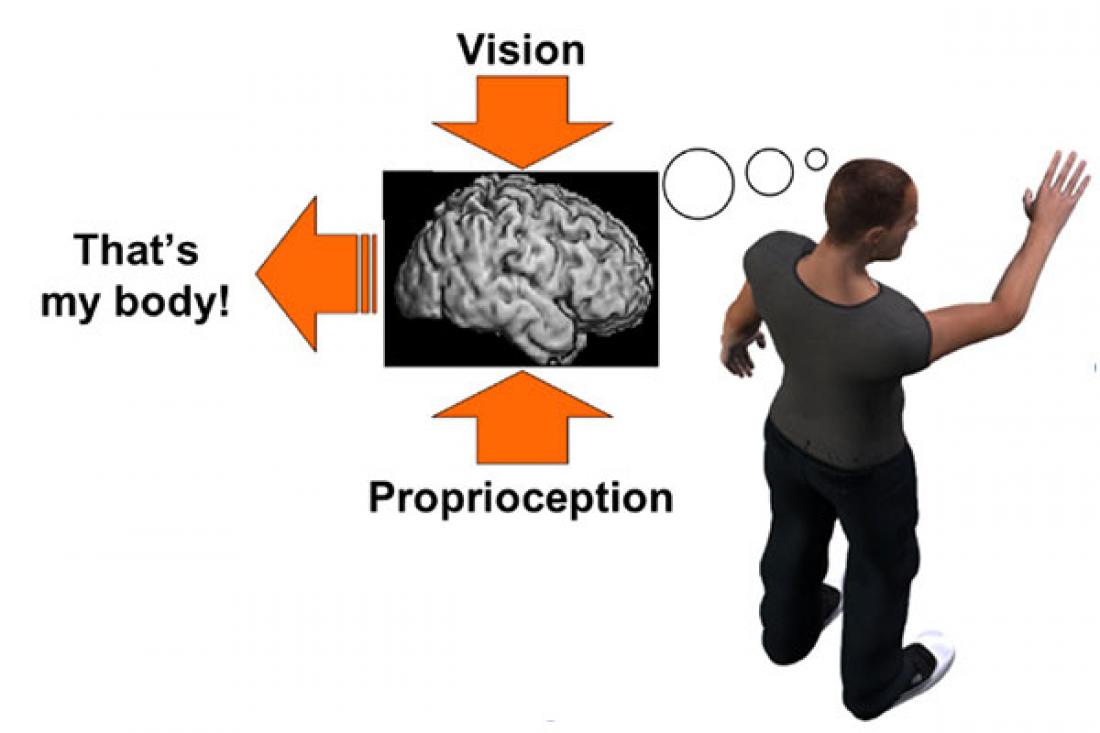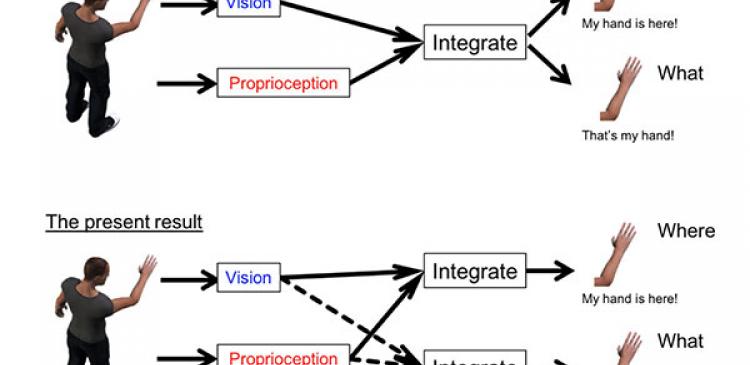Body awareness - Our brain integrates visual, tactile and proprioceptive information to know that seen body parts are part of our own body.
Our brain tells us where parts of the body are in space. We know without looking if our arm is in the air, our foot is in front of the other or beside it. It is called proprioception or body localization and helps us locate our body parts.
We also know that our foot/hand/tongue is part of us and that we have control of it because it can be sensed or felt.
Until now, it has been assumed that the perceived location of one's body part can be used as a behavioral measure to assess the feeling of owning a body part. This means that the experience of where one's body parts are perceived to be located in space (body localization) and the experience of identifying with the body parts (body ownership) depend on the same process in the brain.
However, Kazumichi Matsumiya, a researcher at Tohoku University in Japan has identified that there are in fact two processes underlying body awareness.
To investigate whether the processing pathway is shared between body localization and body ownership, Matsumiya used a computational model of multisensory integration processes and applied this model to a perceptual illusion in which ownership over an artificial hand is experienced.
He found that variances predicted by the model are similar to those observed in localization of the participant's hand, but systematically diverge from those observed in ownership of the artificial hand. These findings provide strong evidence for separate processes between ownership and localization of body parts, and indicate a need to revise current models of body part ownership.
Results from this study suggest that the neural substrates for perceptual identification of one's body parts--such as body ownership--are distinct from those underlying spatial localization of the body parts, thus implying a functional distinction between "what" and "where" in the processing of body part information.
These findings may have implications for understanding the underlying mechanisms for body self-awareness that play an important role in rehabilitation to overcome motor dysfunctions.
Contact:
Kazumichi Matsumiya
Graduate School of Information Sciences
Tohoku University
Email: matsumiyatohoku.ac.jp




